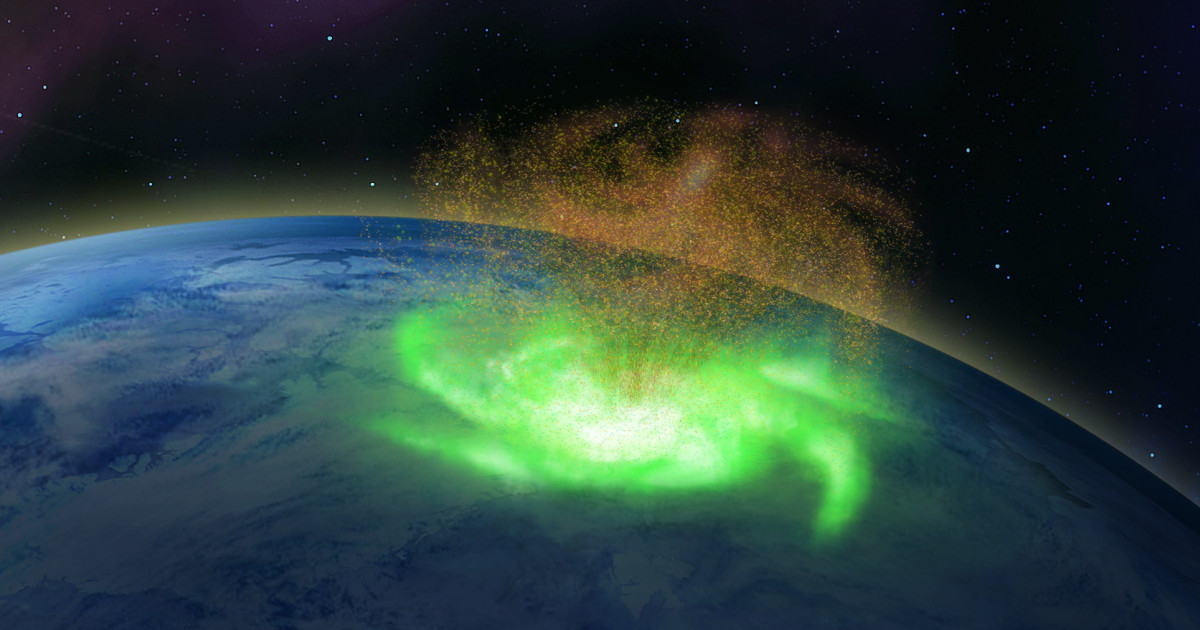
[ad_1]
When it comes to extreme weather conditions, it is safe to say that a “space hurricane” qualifies.
Scientists said last week they observed a previously unknown phenomenon – a swirling mass of plasma 620 miles wide that rolled for hours through Earth’s upper atmosphere, raining electrons instead of water. .
Researchers called the disturbance a space hurricane because it looked and behaved like the rotating storm systems that regularly hit coasts around the world. But until now, they weren’t known to exist.
“It really wasn’t planned,” said Larry Lyons, professor of atmospheric and ocean sciences at the University of California, Los Angeles. “It wasn’t even theoretically known.”
Lyons was one of the authors of a study on the discovery, which sheds new light on space weather events, which was published online Feb.26 in the journal Nature Communications.
Scientists from China, the United States, Norway and the United Kingdom discovered the space hurricane by combing through satellite observations in August 2014. As satellites orbiting the planet and passing over the North Pole, they glimpsed a massive disturbance in the upper atmosphere.
The spiraling-armed space hurricane whirled about 200 miles above the North Pole, settling into place for nearly eight hours, Lyons said.
“You could see streams of plasma going around, which were like space hurricane winds,” he said. “These flows were strongest at the edge and diminished as you moved towards the eye in the center, before resuming on the other side, just like the flow of air in a regular hurricane.”
But maybe that’s where the similarities end. Unlike regular hurricanes which can dump huge amounts of precipitation on the Earth’s surface, scientists have instead observed electrons raining down in the upper atmosphere.
Space hurricanes, like other space weather events, are caused by flows of plasma released by the sun in what is known as the solar wind. As these clouds of charged particles rush through space, they can fuel magnetic storms and trigger stunning displays of the northern or southern lights.
“Tropical storms are associated with enormous amounts of energy, and these space hurricanes must be created by an exceptionally large and rapid transfer of solar wind energy and charged particles into the Earth’s upper atmosphere,” co-author of the study Michael Lockwood, professor of physical space environment at the University of Reading in the UK, said in a statement.
Scientists regularly monitor space weather, as particle radiation from the sun can wreak havoc on orbiting satellites and can sometimes disrupt ground infrastructure, such as surges in power lines. Since the observed space hurricane occurred over the North Pole, it is not believed to pose many dangers to people living in low latitudes, but there are implications for communication systems and navigation.
“People who are interested in satellite communications and GPS signals will care a lot,” Lyons said.
He added that he and his colleagues plan to conduct follow-up studies to determine how often space hurricanes of this size and duration occur and whether smaller and shorter storms occur more frequently.
Lyons said this type of discovery could have been easily missed if the researchers hadn’t spotted clues in the six-year-old data and had the patience to stitch up all the threads.
“We had various instruments measuring various things at different times, so it wasn’t like we were taking a big picture and could see it,” he said. “The really funny thing about this type of work is that we have to put the information together and create a complete picture.”
[ad_2]
Source link
